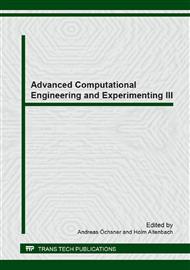p.5
p.11
p.15
p.21
p.31
p.37
p.43
p.49
p.55
Resistance to Electrochemical Corrosion of Extruded Magnesium Alloy AZ61
Abstract:
The purpose of the study was the evaluation of the electrochemical corrosion resistance of extruded magnesium alloy AZ61 in solutions with concentration of 0.012 M NaCl. Resistance to electrochemical corrosion was evaluated on the ground of registered anodic polarisation curves by means of potentiodynamic method. Immersion tests were performed in NaCl solution and time periods of 1-6 days. Scanning microscopy was used to obtain images of the alloy microstructure after immersion tests. Electrochemical impedance spectroscopy was used to evaluate phenomena that take place on the surface of the tested alloy. The results of all performed tests prove explicitly deterioration of corrosion properties of magnesium alloy AZ31 with the increase of molar concentration of NaCl solution. It was found that irrespective of molar concentration of NaCl solution, pitting corrosion can be detected on the surface of the tested alloy. Test results prove that it is necessary to apply protective layers on elements made of the tested alloy.
Info:
Periodical:
Pages:
31-36
Citation:
Online since:
April 2014
Price:
Сopyright:
© 2014 Trans Tech Publications Ltd. All Rights Reserved
Share:
Citation:


